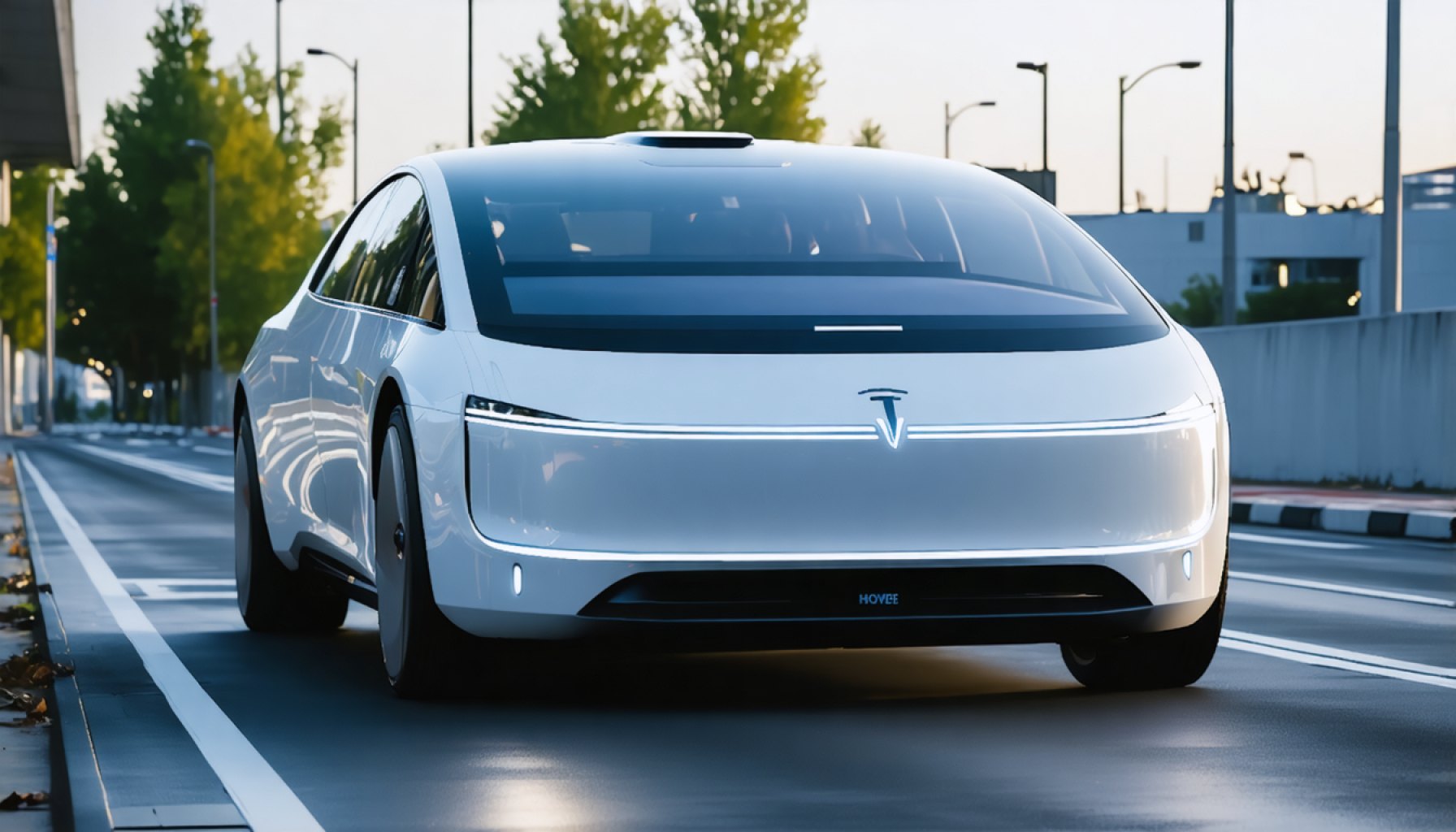
- Applied EV, a small company from Melbourne, navigates the autonomous vehicle industry amidst the downfall of giants like Apple and GM.
- The company, founded in 2015, has produced 20 driverless vehicles with plans to deliver 100 more soon, focusing on niche and industrial markets.
- By forging strategic partnerships with Oxa and Suzuki, Applied EV integrates self-driving software with vehicles, offering a unique market solution.
- Applied EV targets sectors with driver shortages and automation needs, such as solar farms, establishing a solid business foundation and client base.
- The company demonstrates that a strategy of focused, steady progress and adaptability can thrive where broad industry ambitions have failed.
In a landscape where giants like Apple and GM have stumbled and dreams of fully autonomous vehicles litter the tech junkyard, one small Melbourne-based company is quietly making waves. Applied EV is a beacon of persistence amidst an industry-wide struggle, doggedly pursuing a vision that many have abandoned.
Formed in a humble garage back in 2015 by Julian Broadbent and Shane Ambry, Applied EV has navigated the choppy waters of autonomy with a tenacity that’s made it a rare survivor. While Apple shelved its much-hyped Apple Car concept and GM dissolved its Cruise division amidst public safety fiascos, Applied EV has churned out 20 driverless vehicles, sans steering wheel and driver’s seat—promising to deliver 100 more imminently.
What sets Applied EV apart is its focus and adaptability. Instead of delving into the complex, and often exhaustive, endeavor of creating both cars and driving software, Applied EV nurtures partnerships, crafting a niche as the integrator between self-driving software makers and vehicle manufacturers. Leveraging collaborations with the UK-based software company Oxa and Japan’s automotive stalwart Suzuki, Applied EV serves as the technological bridge driving the autonomous vehicle reality forward. Their unique platform supports an ‘Oxa Driver’—a finely-tuned software package designed to override the absence of human control in their engineered machines.
Unlike its competitors, Applied EV has steered its course toward industrial applications where the demand isn’t so staggeringly high to require immediate mass production. Their vehicles are finding utility in sectors where driver shortages are acute and automation translates to efficiency and reliability. In these spaces, even hundreds of units signify monumental success.
Their enterprise has proven not only visionary but also financially prudent. By focusing on tangible and immediate business needs rather than competing in a cutthroat consumer market, their strategic restraint has facilitated organic growth. The company has cultivated a remarkable roster of clients, including those in burgeoning fields like solar farms, who need vast quantities of autonomous vehicles but face personnel shortages—a testament to the company’s pioneering spirit and solid value proposition.
The narrative of Applied EV isn’t merely one of survival but one of agile and forward-thinking strategy; in a field fraught with high-profile failures, their journey serves as a blueprint for thinking small enough to make a big impact. With the looming potential for on-road ventures in areas beset by driver shortages, Applied EV’s measured approach might just be the roadmap the industry needs.
The takeaway? In a world drawn to ambitious claims, Applied EV’s successful simplicity stands as a testament that sometimes, conquering less can mean achieving more, and that steady progress trumps empty promises any day.
Unlocking the Future: How Applied EV is Quietly Revolutionizing Autonomous Vehicles
Introduction
Amidst the fragmented landscape of the autonomous vehicle sector, Melbourne-based Applied EV is a standout. This small company has achieved what many giants couldn’t: creating functional driverless vehicles while maintaining a sustainable business model. Here, we explore additional aspects of their journey, key industry trends, expert insights, and practical steps for those interested in the autonomous vehicle domain.
How Applied EV Stands Out
1. Focused Industry Application:
– Niche Market Focus: Applied EV targets industrial applications where automation can significantly boost efficiency, such as logistics, mining, and agriculture.
– Strategic Collaborations: The company has formed key alliances with firms like software developer Oxa and vehicle maker Suzuki, positioning itself as a crucial integrator in the autonomous vehicle supply chain.
2. Innovative Technology:
– Oxa Driver Software: Central to their vehicles, this software allows total vehicle automation without the need for traditional controls like steering wheels.
– Adaptable Platform: Their platform supports various vehicle types, making it versatile for different industrial applications.
3. Organic Growth Model:
– Financial Prudence: By focusing on attainable markets and resistenting the consumer-market frenzy, Applied EV achieves organic growth and sustainability.
– Client Roster: Includes innovative sectors like solar farms, showcasing their vehicles’ benefits in managing driver shortages and improving operational efficiency.
Market Insights & Trends
1. Industry Forecasts:
– The autonomous vehicle market is expected to grow steadily, with greater adoption in commercial and industrial sectors due to logistical efficiencies and cost savings.
– Source: A report by Allied Market Research predicts the autonomous vehicle market will surpass $556 billion by 2026, driven by advancements in AI and sensor technologies.
2. Resilience in Adversity:
– Companies adopting a focused, sustainable business model like Applied EV’s are likely to fare better amid industry turbulences.
Pros & Cons Overview
Pros:
– Targeted industrial application aligns with immediate market needs.
– Collaborative approach minimizes capital expenditure without sacrificing technology depth.
– Provides logistic solutions addressing labor shortages.
Cons:
– Niche focus may limit exposure and scalability in mainstream markets.
– Heavy reliance on partner technologies could pose integration challenges.
How-To Steps for Industry Newcomers
1. Identify Target Markets: Focus on sectors with clear opportunities for automation.
2. Prioritize Partnerships: Collaborate with specialized software and hardware developers rather than developing all components in-house.
3. Leverage Flexible Technology Platforms: Invest in adaptable technology that can cater to various applications.
Controversies & Limitations
– Safety Concerns: Ongoing scrutiny over the safety of autonomous systems is inevitable, especially in public transportation.
– Regulatory Challenges: Compliance with varied regulations across different regions is a complex landscape to navigate.
Conclusion & Quick Tips
For those delving into the autonomous industry, following Applied EV’s strategic restraint and focus on industrial applications offers a prudent path. Practical applications of autonomous technology are most vital in sectors experiencing manpower shortages—leveraging this need aligns innovation with immediate demand.
Actionable Recommendations:
– Explore Collaboration Over Competition: Build networks with software and vehicle manufacturers.
– Focus on Niche Markets: Identify and solve specific industry pain points.
For further exploration on similar transformative technologies and ideas, check out TechCrunch. Embrace the simplicity of small yet impactful innovations to navigate the autonomous vehicle landscape.



